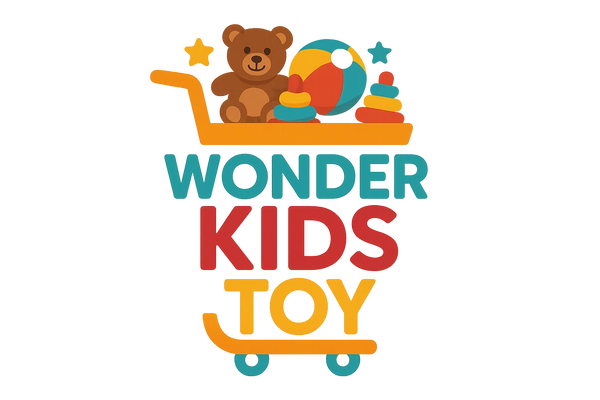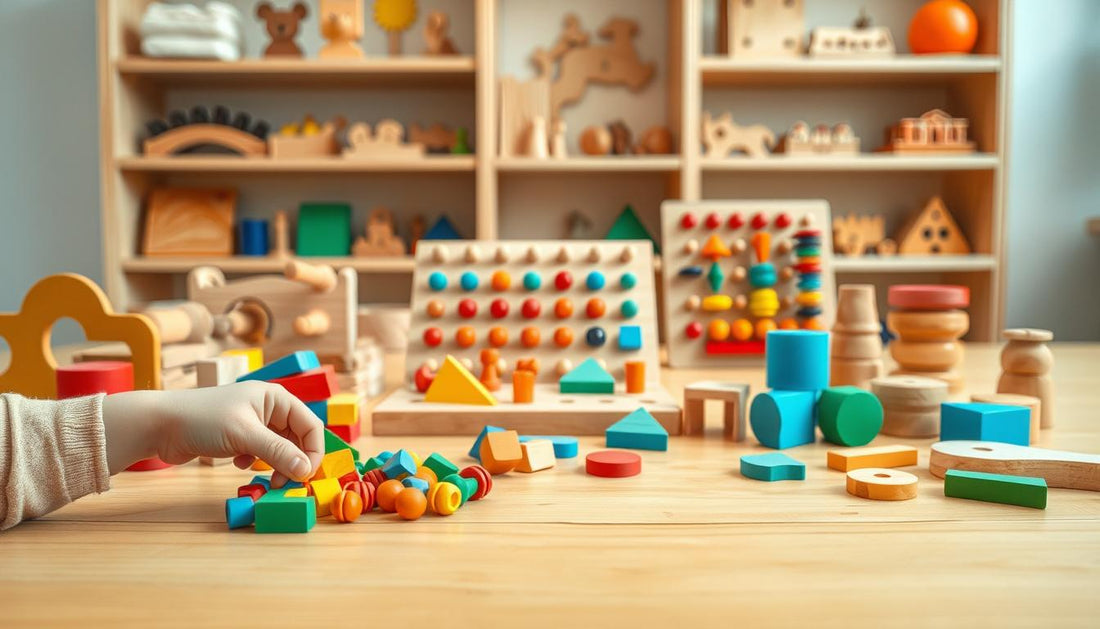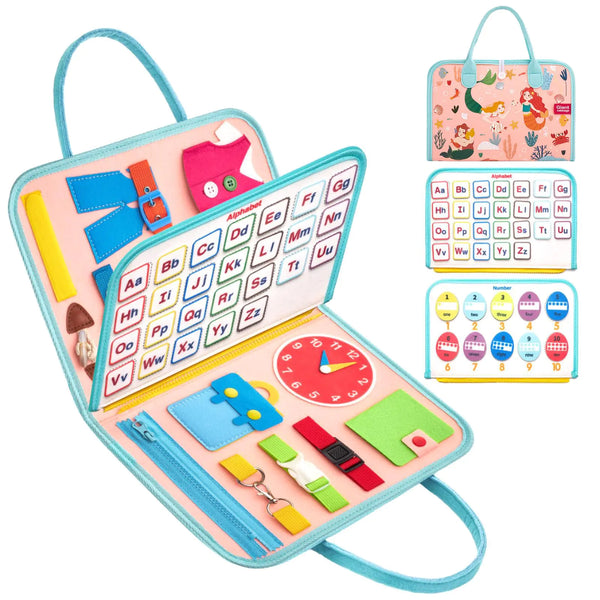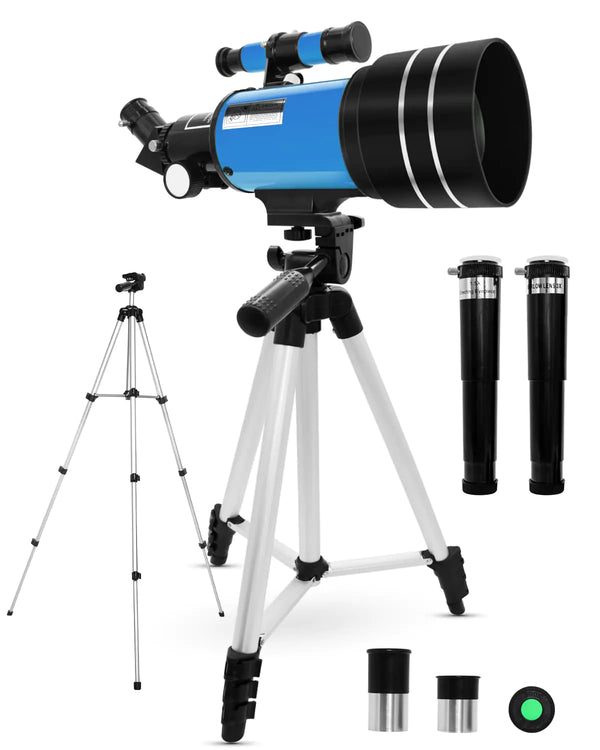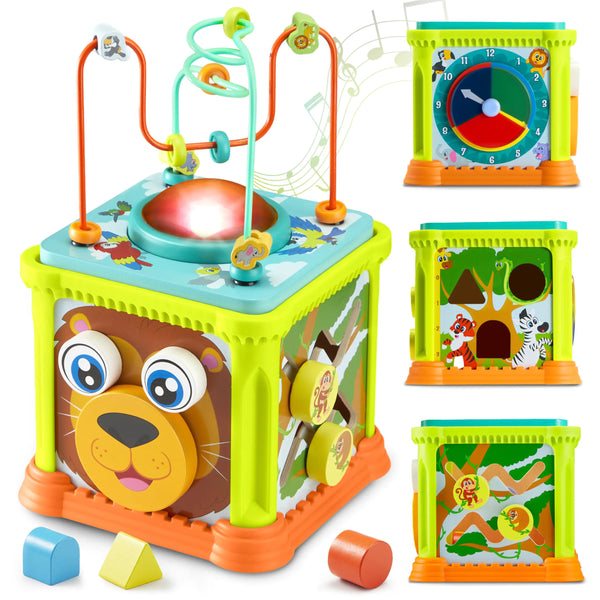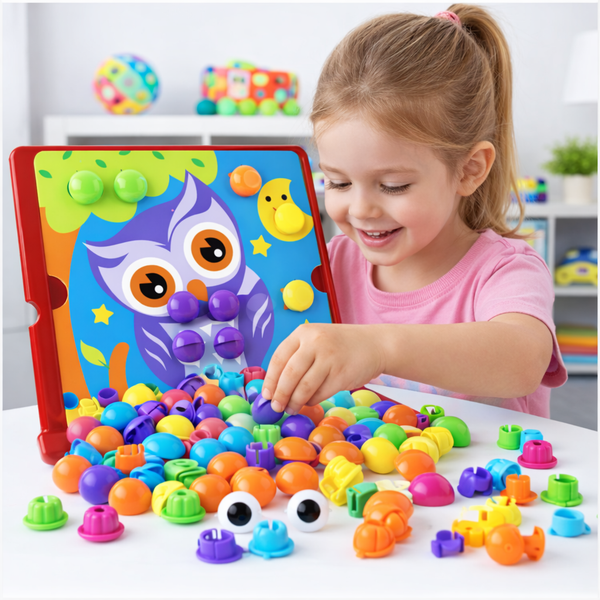As a parent, I've learned how vital Montessori toys are for my child's early years. These tools are made to encourage child-led learning and open-ended play. This allows kids to explore and learn at their own pace.

Using Montessori toys in our playtime helps our kids become independent and curious. It also builds a love for learning. This way of playing is more than just fun. It's about setting the stage for their future success.
Key Takeaways
- Montessori toys promote child-led learning and open-ended play.
- These educational tools foster independence and curiosity in children.
- Incorporating Montessori toys into playtime can lay the foundation for future success.
- Montessori toys are designed to allow children to explore and learn at their own pace.
- They help develop a love of learning in children.
Understanding the Montessori Philosophy
The Montessori philosophy emphasizes child-led learning and a well-prepared learning environment. Dr. Maria Montessori created it. This method encourages hands-on learning and teamwork.
The Core Principles of Montessori Education
The Montessori philosophy has key principles. Observation is essential, as teachers watch how children learn and what interests them. This helps tailor the learning to each child.
Individualized instruction allows children to learn at their own pace. They can take their time to understand each idea before moving on.
| Principle | Description |
|---|---|
| Observation | Tailoring education to the child's interests and pace |
| Individualized Instruction | Allowing children to learn at their own pace |
| Hands-on Activity | Using practical life skills to foster independence |
Child-Led Learning and Independence
Child-led learning is central to Montessori. It lets kids take charge of their knowledge. This builds independence and self-confidence.
Practical life skills are key. They help kids learn to take care of themselves and their surroundings.
The Role of the Prepared Environment
The prepared environment is designed for learning and independence. It's set up for kids to explore and discover. Materials and activities are tailored to match their developmental stage.
How I Discovered the Power of Montessori Methods
I started exploring Montessori because I wanted a better education for my child. I was drawn to the focus on practical life skills and the environment's role in promoting independence.
What Are Montessori Toys and Why Are They Essential for Your Child?
Montessori toys are made to help kids grow independent, curious, and love learning. They are not just toys but tools that support the Montessori method. This method focuses on learning through play.
Defining Characteristics of Montessori Toys
Montessori toys are simple, durable, and teach kids something new. They are often made from wood, cotton, or metal. This gives kids a real touch and feel.
Unlike other toys, Montessori toys don't use bright colors or sounds to grab attention. Instead, they encourage kids to think and be creative.
Key features of Montessori toys include:
- Made from natural, non-toxic materials
- Designed for open-ended play
- Encourage hands-on learning and exploration
- Foster independence and self-directed learning
How They Differ from Conventional Toys
Montessori toys and regular toys are very different. Regular toys aim to entertain, while Montessori toys aim to teach. They help children learn through hands-on activities, exploration, and critical thinking.
The Scientific Basis Behind Their Design
Montessori toys are based on Dr. Maria Montessori's method. This method is based on how kids learn and grow. Montessori toys are made to help kids learn and develop at their own pace.
| Age Group | Montessori Toy Examples | Developmental Benefits |
|---|---|---|
| 0-12 months | Sensory balls, rattles | Sensory development, motor skills |
| 1-3 years | Stacking toys, practical life materials | Fine motor skills, problem-solving |
| 3-6 years | Mathematical materials, cultural materials | Cognitive development, cultural awareness |
My Experience with Montessori Toys' Impact on Development
From what I've observed, Montessori toys play a significant role in helping children grow. They improve thinking skills and help kids feel confident and capable. Montessori toys encourage children to learn independently.
In short, Montessori toys are more than toys. They are key tools for kids' development. Knowing what makes them special helps parents choose the best toys for their kids.
The Developmental Benefits of Montessori Toys
Montessori toys help kids grow in many ways. They boost their thinking, moving, and social skills. These toys encourage kids to learn independently, which is essential for their growth and development.
Cognitive Development and Problem-Solving Skills
Montessori toys are excellent for developing children's brains. They make kids think deeply and connect ideas. For instance, puzzles and shape-sorters teach kids to solve problems by figuring out how to fit things together.
Fine and Gross Motor Skill Enhancement
These toys also improve kids' fine and gross motor skills. Toys like stacking blocks work on fine motor skills. Toys that encourage kids to move, such as climbing structures, help develop gross motor skills. Both are important for kids' physical growth and coordination.
Social and Emotional Growth
Montessori toys also aid in social and emotional development. Many toys are designed for play together, teaching children to share and cooperate. They also help kids understand and express their feelings, which is part of emotional intelligence.
Concentration and Focus Improvement
Montessori toys also help children focus better. They are fun and challenging, keeping kids interested for a long time. This helps kids learn to concentrate, which is vital for school and life success.
In short, Montessori toys offer numerous benefits for children. They support kids' growth in many areas. By using these toys, parents can give their kids a great start in life.
Key Features That Make a Toy "Montessori"
Finding an actual Montessori toy can be tricky. But knowing what to look for makes it easier. Montessori toys possess unique qualities that set them apart.
Natural Materials and Sensory Appeal
Montessori toys often utilize natural materials, such as wood, cotton, and metal. These materials feel good to touch and look nice. They also help kids connect with nature, as Montessori teaches.
Simplicity and Purpose in Design
Montessori toys are simple and have a clear purpose. They're not flashy or too complicated. This lets kids focus and use their imagination.
Open-Ended Play Possibilities
Montessori toys are great for open-ended play. Kids can use them in many ways. This helps them learn and grow at their own pace.
Reality-Based Learning
These toys teach through real-life experiences. They help kids understand the world and learn practical skills. This is key for everyday life.
My Checklist for Identifying True Montessori Toys
- Is the toy made from natural materials?
- Does the toy have a simple, uncluttered design?
- Does the toy encourage open-ended play?
- Is the toy grounded in real-life experiences?
Use this checklist to find real Montessori toys. They will help your child learn and grow.
Montessori Toys for Infants (0-12 months)
The first year of a child's life is key for sensory growth. Montessori toys are vital at this time. They help infants explore and learn by stimulating their senses.
Sensory Development Toys
Sensory toys are a must for infants. They come in many textures, colors, and sounds. This variety helps infants develop their senses.
Grasping and Reaching Aids
Grasping and reaching are significant steps for infants. Montessori toys help with these skills. They are light and easy to hold, making them fun to practice with.
Visual Tracking Objects
Visual tracking toys help infants follow moving objects. They are bright and move slowly. This helps with visual skills and hand-eye coordination.
My Top Recommendations for Infant Montessori Toys
Some top Montessori toys for infants are sensory balls, wooden rattles, and fabric books. They are fun and help with development.
How I Used These Toys with My Child
I used these toys with my child, and I saw significant improvements. Sensory balls helped with motor skills and awareness. Wooden rattles enhanced auditory development and fine motor skills, including grasping.
Using these Montessori toys in daily play helps infants grow. It fosters a nurturing environment for growth and development.
Montessori Toys for Toddlers (1-3 years)
Montessori toys for toddlers focus on practical life skills, language, and fine motor skills. These align with their natural growth stages. At this age, kids start to show independence and explore with curiosity.
Practical Life Skill Toys
Practical life toys are key for toddlers. They help develop everyday skills needed for independence. These toys encourage activities like pouring, sorting, and dressing. They improve fine motor skills and hand-eye coordination.
Examples of practical life skill toys include:
- Pouring cups and jugs
- Sorting boards and objects
- Dressing frames
Language Development Materials
Language development is vital for toddlers. Montessori offers tools like sandpaper letters, moveable alphabets, and language cards. These help toddlers recognize and form letters, preparing them for reading and writing.
Fine Motor Skill Builders
Fine motor skill toys improve a toddler's object manipulation. This enhances dexterity and coordination. Examples include stacking toys, puzzles, and playdough with tools.
My Top Recommendations for Toddler Montessori Toys
Choosing Montessori toys for toddlers should be fun and educational. Here are my top picks:
| Toy | Skill Developed | Age Range |
|---|---|---|
| Grimm's Wooden Stacking Tower | Fine motor skills, problem-solving | 1-3 years |
| Melissa & Doug Wooden Pouring Cups | Practical life skills, hand-eye coordination | 1-3 years |
| PlanToys Moveable Alphabet | Language development, literacy | 2-3 years |
Observing Practical Life Skills Development in Action
Montessori education is rewarding when you see kids develop practical life skills. Toddlers enhance their fine motor skills and confidence through activities such as pouring and dressing.
Seeing a child pour without spilling is a testament to the effectiveness of Montessori's methods.
Montessori Toys for Preschoolers (3-6 years)
When kids reach preschool age, they become super curious and eager to learn. It's the perfect time to give them Montessori toys that meet their developmental needs. At this age, they start exploring more on their own. The right toys can boost their learning journey.
Mathematical Concept Materials
Montessori toys for preschoolers have special materials for math. These are made from natural stuff and help kids learn by trying things out. You'll find number rods, sandpaper numbers, and counting beads among them.
Sensorial Exploration Tools
Sensorial play is key in Montessori learning. Toys that encourage this help kids improve their senses. You can find color boxes, sound cylinders, and texture boards that aid in this process.
Cultural and Scientific Discovery Toys
Montessori toys also help kids discover the world. They introduce kids to geography, biology, and physics. Puzzle maps, botanical jigsaw puzzles, and simple machines are great examples.
My Top Recommendations for Preschooler Montessori Toys
Here are some top picks for Montessori toys for preschoolers:
- Number rods and counting beads for math
- Color boxes and sound cylinders for the senses
- Puzzle maps and botanical jigsaw puzzles for discovery
These toys follow the Montessori method, making learning fun and exciting for preschoolers. They help kids playfully develop essential skills.
Navigating Online Montessori Toy Stores
As a parent who follows the Montessori method, finding the right online stores is key. The internet offers a wide range of Montessori materials, but not all online stores are the same.
Trusted Online Retailers for Authentic Montessori Materials
It's important to find online stores that sell real Montessori materials. Some stores specialize in Montessori products. They offer toys that follow the principles of Montessori education.
| Retailer | Specialty | Price Range |
|---|---|---|
| Monti Kids | Montessori toys for infants and toddlers | $20-$100 |
| Amazon | Wide selection of Montessori materials | $10-$500 |
| Greenworks Toys | Eco-friendly Montessori toys | $15-$80 |
What to Look for in Product Descriptions
When looking at online Montessori toy stores, focus on product descriptions. Look for information on materials, educational benefits, and Montessori alignment. A good description should demonstrate how the toy helps your child develop, whether in practical life skills or through open-ended play.
Reading Between the Lines of Customer Reviews
Customer reviews offer insights into the quality and effectiveness. However, it's essential to understand the reviewer's perspective. Look for reviews that discuss the toy's durability, its ability to hold a child's interest, and whether it meets Montessori standards.
My Personal Shopping Experience and Recommendations
Based on my experience, I suggest looking for stores that provide detailed product information and sell authentic Montessori materials. Reading reviews from other parents who bought the toys is also helpful.
By keeping these tips in mind, you can confidently shop for Montessori toys online. This ensures you get the best educational toys for your child's growth.
DIY Montessori Toys and Activities
With a bit of creativity, you can make your Montessori-inspired toys using everyday household items. This approach not only fosters a creative environment but also promotes a collaborative one. It also encourages child-led learning and the development of practical life skills.
Simple Homemade Sensory Materials
Creating sensory materials at home is straightforward. Just fill containers with rice, beans, or sand and hide small toys or objects for your child to find. You can also make a sensory bin with water and soap for fun water play.

Practical Life Activities Using Household Items
Practical life activities are a key component of the Montessori method. You can create activities using household items, such as sorting laundry, setting the table, or preparing simple meals. These tasks help develop fine motor skills and independence.
- Sorting clothes into different baskets
- Using a small broom and dustpan to clean up
- Preparing a simple salad with pre-washed greens and vegetables
Upcycling Regular Toys into Montessori-Aligned Materials
You can breathe new life into old toys by making them Montessori-aligned. For example, an old puzzle can be transformed into a sorting game by categorizing pieces by color or shape.
Budget-Friendly Alternatives I've Created
Some of my favorite DIY projects include making a wooden spoon drum, a sensory bottle filled with oil and water, and a simple pouring activity using cups and a jug. These activities are not only budget-friendly. They also offer hours of engaging, educational play.
Creating a Montessori-Friendly Play Space at Home
Creating a space that fosters independence and curiosity is key in Montessori education. Designing a play area that encourages exploration and learning supports your child's development.
Organizing Toys for Accessibility and Independence
Montessori emphasizes promoting independence in children. Organizing toys and materials for easy access is essential. Use low shelves and baskets to store toys, making it easy for your child to choose what to play with.
This approach encourages self-directed play and keeps the environment clutter-free. By letting your child choose their activities, you support their development of practical life skills.
Rotating Toys to Maintain Interest
To keep the play space engaging, rotate toys periodically. You don't need to buy new toys constantly. Store some toys away and bring them out after a few weeks. This makes old toys seem new again, keeping your child interested and engaged.
Incorporating Nature and Natural Elements
Adding natural elements to your play space enhances learning and development. Use materials such as wood, cotton, and plants to create a warm, inviting atmosphere. This adds aesthetic value and helps your child develop an appreciation for nature.
How I Transformed Our Living Space on a Budget
I transformed our living space into a Montessori-friendly area without incurring significant expenses. I repurposed old furniture and used natural materials for decoration. I also involved my child in the process. This made the task enjoyable and taught my child about organization and the natural world.
By following these strategies, you can create a Montessori-friendly play space. It supports your child's development and fosters a love for learning.
Common Misconceptions About Montessori Toys
When I first researched Montessori toys, I discovered many myths. As a parent, knowing what makes a toy Montessori is key. It helps you understand how it can benefit your child's growth.
The "No Plastic" Myth
Many people think Montessori toys are only made from natural materials, such as wood and fabric. But some Montessori toys do have plastic. It's used if it helps teach something important.
Montessori vs. Waldorf Approaches
Some think Montessori and Waldorf are the same. But, they're not. Montessori is about kids learning on their own and practical skills. Waldorf focuses on creative play and natural materials.
The Idea That All Toys Must Be "Educational"
Some parents think all Montessori toys must teach something. However, Montessori also values durable and straightforward toys. Sometimes, the simplest toys teach the most.
Mistakes I Made When Starting My Montessori Journey
I once thought every toy had to be handmade or from natural materials. However, the real value of Montessori toys lies in teaching children to be independent and curious. Here's what I learned:
- Look at the toy's quality and purpose, not just its material.
- Remember, child-led learning is at the heart of Montessori.
- Be ready to change your approach as you learn more about your child.
Balancing Montessori Toys with Other Play Experiences
Creating a healthy play space involves combining Montessori toys with other types of play. As a parent, it's key to know that Montessori education isn't about cutting out other play. It's about mixing things in a way that meets your child's needs.

The Role of Imaginative Play
Imaginative play is crucial for a child's mental and emotional development. Montessori toys are practical, but creative play also boosts creativity and problem-solving skills. It's not about picking one over the other, but finding a balance that works for your child. For example, you can mix imaginative play with Montessori materials for practical tasks.
Digital Media and Montessori Principles
In today's world, it's hard to keep digital media out of kids' play. But Montessori values real-world interactions. Limiting screen time and focusing on hands-on activities can help a child learn. Choose educational digital content that encourages learning and creativity.
Finding the Right Mix for Your Child's Unique Interests
Every child is unique, and what works for one might not work for another. Watching your child's interests and adjusting your approach is key. If your child is passionate about a particular theme, consider using Montessori toys and other materials that align with their interests. This makes play personal and fun.
My Approach to Blending Different Play Philosophies
In my experience, mixing different play styles is often the best approach. This might involve combining Montessori toys with imaginative play or utilizing digital media effectively. The aim is to make a play space that's diverse and engaging, helping your child grow. Being flexible and listening to your child helps create a balanced play experience that supports their development.
Conclusion: Embracing the Montessori Approach to Toys and Play
The Montessori approach to toys and learning is unique. It focuses on the child's needs and growth. By using montessori toys, parents can make a space that helps their child grow.
Montessori toys help children learn independently. They encourage kids to be independent and think for themselves. These toys help children improve their skills in small tasks, problem-solving, and critical thinking.
When searching for Montessori toys, aim for a balanced play area. Mix these toys with other play to keep learning fun and balanced. This way, your child gets the most out of montessori toys and stays engaged.
Choosing this path means your child will love learning for life. That's a significant investment in their future.
FAQ
What are the benefits of using Montessori toys for my child's development?
Montessori toys support cognitive development, physical movement, and emotional well-being. They also improve focus and concentration. These toys make kids independent, curious, and love to learn.
How do I identify authentic Montessori toys?
Real Montessori toys are made from natural materials. They have simple designs that allow kids to play freely. They should teach real-life skills and let kids learn on their own.
Can I create my own Montessori toys at home?
Yes, you can make your own Montessori toys at home. Use things you already have. Making sensory toys and turning regular toys into Montessori ones is a great way to keep your child learning and having fun.
How do I create a Montessori-friendly play space at home?
Make your play area easily accessible and keep it simple. Change the toys often to keep things interesting. Adding natural things helps create a space that supports learning and play.
Are Montessori toys suitable for children of all ages?
Montessori toys are suitable for children from babies to preschoolers and beyond. They match different ages with the right toys and activities. This helps kids grow in many ways.
How do I balance Montessori toys with other play experiences?
Find the right mix for your child by adding different play types. This includes pretend play, screen time, and other forms of play. It makes play interesting and meets your child's needs.

